Every year, property owners look to the skies in anticipation of the next summer storm or winter blizzard that might result in a potential power outage. The reality is, the next power outage is likely to come from something much closer to the ground.
Year after year, the intrusion of small, climbing animals into electrical substations adds up to billions of dollars in repair costs and lost revenue, and a succession of mild winters combined with a shrinking natural animal habitat is causing this problem to become more acute and something public power utilities can no longer ignore.
A nationwide issue
Animal-caused outages are not simply a rural phenomenon: Squirrels, raccoons, snakes, domestic cats and other climbing animals cause substation outages in urban, suburban and remote locations across North America. A few notable examples – all of which occurred in within the past year and one-half:
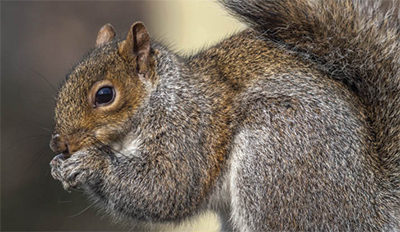
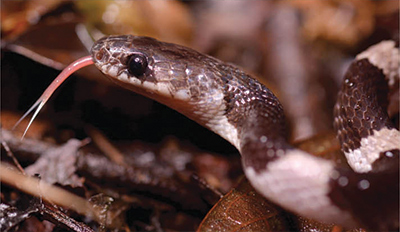
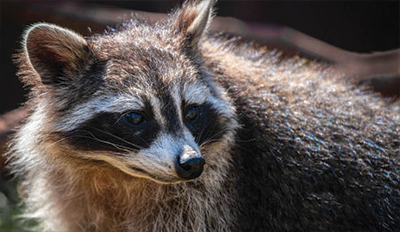
Animals causing outages
In St. Augustine, Florida, a power outage caused by a squirrel damaging key components at a utility station led to a sewage backup, ultimately resulting in 60,000 gallons of untreated sewage flowing into the San Sebastian River.
In Richmond, Virginia, a squirrel short-circuited a substation, causing a massive power outage which threw sections of Richmond into darkness, disabling traffic signals at several major intersections, closing businesses and schools – including Virginia Commonwealth University – for most of the day.
In Seattle, a raccoon invasion of a substation resulted in the loss of power to 40,000 residents.
Smaller substation outages are commonplace. The satirical website CyberSquirrel1.com, which was created to show that squirrels pose a much larger threat to the power grid than terrorism, tracks hundreds of outages across the U.S. every year. In fact, in 2015, a single power provider in Louisiana reported more than 700 outages caused by animals.
Costs and challenges to the industry
The power producing industry has long felt the impact of outages caused by animals entering – and disrupting – substations. Substation incursions are a huge problem, and it’s not getting any better:
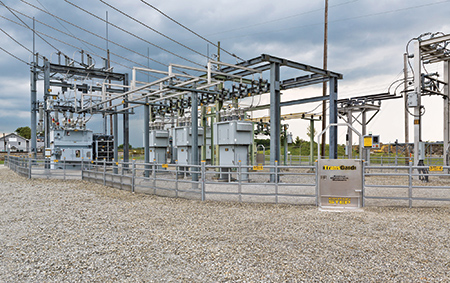
Complete installation: patented, modular design delivers mild
electric shock preventing climbing animals from entering the facility
Wildlife near power equipment is the most common cause of outages at public power utilities, according to the American Public Power Association. In 2015, squirrels caused 560 power outages… in Montana alone. On average, 13,000 people affected by an animal-caused outage. A single substation outage can cost tens of thousands of dollars in equipment cost, man hours and more.
Outages cost the U.S. economy an estimated $80-188 billion every year in lost commercial activity, lowered productivity, consumer dissatisfaction and more.
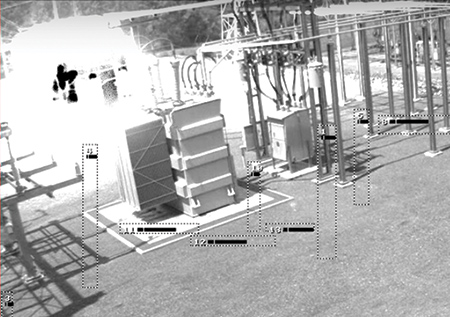
Substation explosion caused by a snake
Utilities are recognizing that while the costs to do actual substation repairs are significant, the cost to repair a reputation is much higher – and they have taken steps over the years to install measures to keep climbing animals at bay.
Engineers and technicians have attempted to prevent or discourage incursions by using an array of methods: bushing guards, heat shrink tapes and tubing, spinning line guards, screening, repellants, greases, pole covers, lights, insulator coatings, decoys, and even live trapping.
These measures have had some temporary success, but they haven’t provided permanent solutions. As an American Public Power Association representative noted in The Washington Post, “Animals aren’t just smart, they’re persistent.”
An effective, humane solution
Many substation operators are turning to an innovative, field-tested solution to the problem: the TransGard substation fence. The company manufactures and installs the only substation fencing that delivers a humane – but effective – electric shock that deters climbing animals, an approach the IEEE calls the most effective barrier against animal incursion.
The fence was designed exclusively for substations: it’s modular, durable, and installs in half a day without any interruption to power. To date, the company has installed fencing at more than 2,500 North American substations – substations operated by dozens of major utilities, electric cooperatives, municipalities and other power suppliers.
The technology behind the fencing uses an animal’s own behavior against it. Squirrels, for example, have a habitat that can stretch across acres. They also have very accurate ‘spatial memory’ – that is, a knack for remembering key locations and landmarks in their environment. Squirrels need this spatial memory for survival – it’s how they remember where they’ve hoarded small caches of food throughout their habitat.
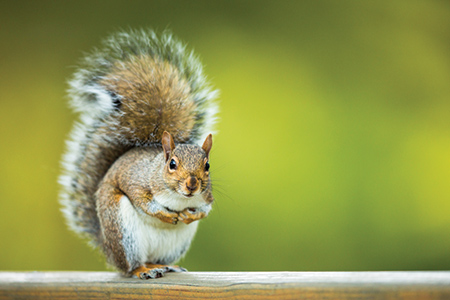
Eastern grey squirrel. Good spatial memory to know what areas to avoid
Just as squirrels remember where they stored their food, they also remember where they received an uncomfortable jolt at a substation. A squirrel’s “spatial memory” means it can remember where that uncomfortable experience happened — and also remember to avoid the unpleasant sensation the fence can cause.
In the field: Protection for power providers
Dozens of electric cooperatives, municipalities and other power providers across North America have installed this high-end fencing. A few examples illustrate the scope of the animal outage problem for substation operators – and the technology’s effectiveness in the field:
Rochester Gas & Electric (RG&E) operates some 165 substations and provides electricity to 362,000 residents and businesses in upstate New York. In the early 1980s, RG&E began searching for ways to address a growing problem of outages caused by squirrels and raccoons entering substations. Besides disrupting service to customers, each damaged substation translated into a cost of approximately $10,000 for RG&E in repairs. RG&E began a system-wide installation program in 1999, and since then has installed TransGard fences in all of its 165 substations with exposed bushings, insulators, conductors or other components within an animal’s reach from the ground. The company estimates it has saved hundreds of thousands of dollars in costs associated with substation outages.
Western Farmers Electric Cooperative (WFEC), which manages more than 400 substations in Oklahoma, New Mexico, Texas and Kansas, had been plagued for decades by repeated substation outages caused by the incursion of bull snakes, resulting in $15-20,000 in lost revenue and repair costs with each outage. After seeing the specially-designed snake panel, WFEC technicians placed a ‘test fence’ around a problem substation in central Oklahoma. The application of the fencing proved to be easy and effective, and the fencing is now standard on all new substation construction.
West Kentucky Rural Electric Cooperative Corporation (WKRECC) supplies energy via 12 substations to approximately 38,000 members across five counties in Western Kentucky and Tennessee. The cooperative had been experiencing a frustrating number of recurring outages due raccoons, snakes and cats causing repeated damage at the same substations. After experiencing success with its first fence in late 2014, WKRECC has installed fences at 9 of its 12 substations and is working toward adding fences to the remaining ones.
Mishawaka Utilities electric distribution system is the second largest municipal utility in the state of Indiana, providing service to a population of 46,557. In 2001, Mishawaka began to explore the application of animal deterrent systems for one of its substations that had been experiencing a high number of outages caused by squirrels. Mishawaka observed the new installation for a full year, and during that time there were no instances of animal-related outages. Mishawaka installed the fencing on three additional substations that had been experiencing a high number of animal-related outages. Since that time the company has experienced no animal outages on any of the substations protected by the high-tech fencing.
Ameren is the largest electric utility in Missouri and the second largest electric utility in Illinois, maintaining 2,400 substations and servicing approximately 2.4 million customers across both states.
At least 50 percent of the Ameren’s Illinois substations were at high risk for damage from squirrels, raccoons, opossums and even snakes. In 2003, Ameren looked to this latest technology for help in solving their animal-related outage problems and installed fencing at a handful of substations. Since that time, Ameren has applied the system to more than 200 of their most at-risk sites. Ameren has not experienced an animal-related substation outage with the fencing properly installed and intact.
With human activity driving the reduction in size of animal habitat and utilities adding new substations every year to meet public demand, animal incursion will continue to represent a costly challenge. By exploring cost-effective deterrents that have a proven track record in the field, substation operators can mitigate the expense of animal substation outages -- and the inconvenience they cause customers.
About the Author
Scott Beeler is a communications consultant working with leading companies in the energy market.







